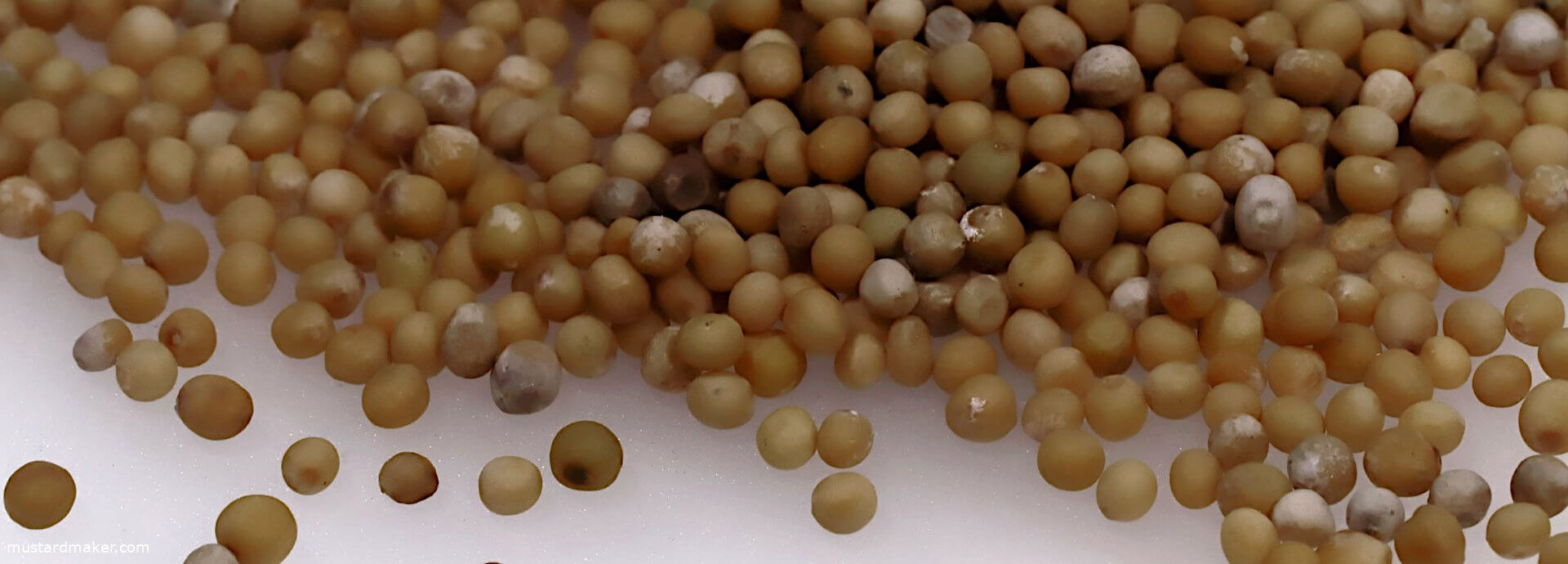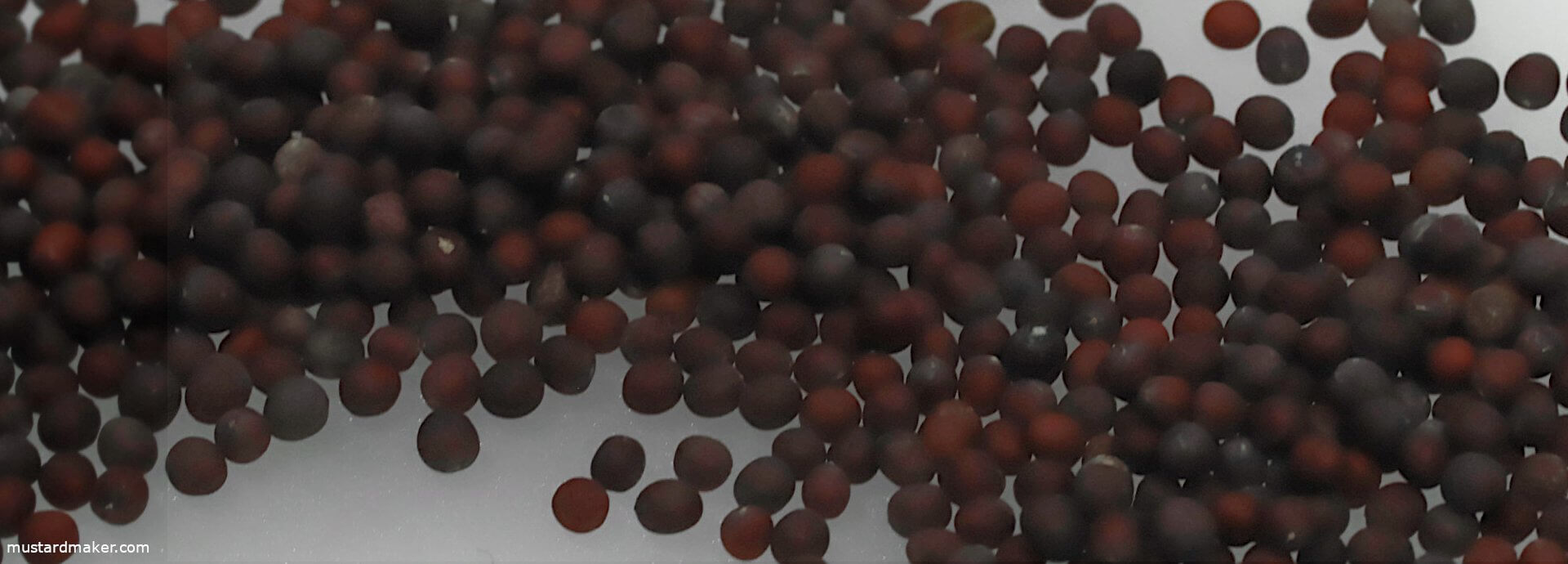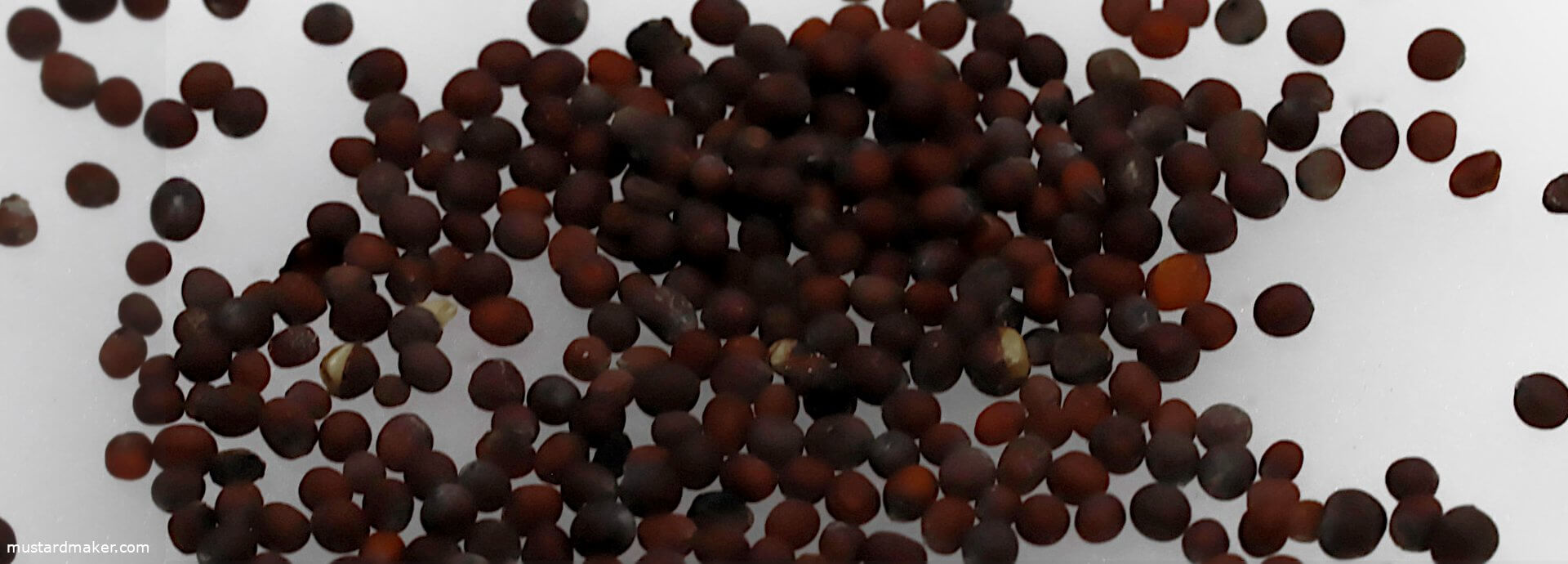Mustard is a rather inconspicuous plant from the cruciferous family. Currently, there are over 40 species of mustard worldwide. Not the types of mustard found in stores, but the mustard plants in the fields. The most important mustard varieties are white mustard (Sinapis alba or Brassica alba), brown mustard (Brassica juncea) and black mustard (Brassica nigra).
White mustard (sinapis alba)
White mustard, also called yellow mustard and called garden mustard is produced from yellow mustard seeds. The white to yellowish round seeds have a size of 2-3 mm. The finished mustard has a mild, spicy taste. Medium hot mustard is produced from yellow mustard seeds. About ten species of white/yellow mustard are known in Europe and the Mediterranean region. The seeds and leaves are harvested from the mustard plant, which grows to a height of 1.2 -1.5 meters. The pods with the mustard seeds develop from the yolk-yellow and vanilla-scented flowers, which are easily confused with rapeseed. Each pod contains about 8 seeds. The mustard plant itself is an annual, so white mustard must be reseeded each year. White/yellow mustard is the main variety of mustard used to make mustard oil, mustard paste and mustard flour. The mustard seeds are needed for a wide variety of pickles.

Brown mustard (brassica juncea)
The seeds of brown mustard seed, Romanian mustard, sareptasenf or rutabaga are smaller. They have a diameter of 1-2 mm. The seeds have a brown-reddish to chocolate-brown hull. The core of the seeds is yellow and the flowers have a pale yellow color. The flavor of brown mustard seed is intense and pungent. The seeds also have an antibiotic. warming and stimulating effect and are also suitable for growing sprouts. Brown mustard is also called Indian, Oriental, Asian or Chinese mustard, Russian mustard, green mustard.

Black mustard (brassica nigra)
Black mustard seeds are the smallest. They are only 1-1.5 mm in size. Their color ranges from gray and black to brown. Their taste is more bitter than the taste of other mustard varieties, but not acrid. Black mustard seeds are used to make spicy mustard. Black mustard (Brassica nigra) stimulates metabolism, irritates the skin and promotes blood circulation. It stimulates detoxification. The pungency comes from the active ingredient sinigrin. Black mustard does not grow as tall as other mustard varieties. The height of growth is 30 cm to 70 cm. Commonly black mustard is called red, green or brown mustard, Dutch or French mustard.

Food mustard
Food mustard consists of a mixture of white mustard and black mustard. The sharper the mustard, the greater the proportion of black mustard. Spicy Dijon mustard consists almost entirely of black mustard seeds. Indian mustard is popular as a vegetable. Its leaves are prepared like spinach.
Brown and black mustard also differs in Brassica Juncea and also Brassica integifolia (Indian brown mustard). It originates from the Near East and is considered “very hot”. In trade, the mustard variety is traded as red mustard.